
Starting a swim shorts line was one of the most exciting (and terrifying) things I’ve ever done. But trust me—it’s totally doable if you break it down step by step.
How do I start my own swim shorts line?
To launch your own swim shorts line, begin by identifying your target market and building a strong brand identity. Then, sketch your designs, source reliable manufacturers, and create samples. After testing and refining, set up production, establish your online store or retail partnerships, and market your product through social media, influencers, and paid ads. Stay consistent and adaptable throughout.
It’s a process, not a sprint—and I’ll walk you through it.
Who Is Your Ideal Customer, and How Can You Build a Swim shorts Brand Around Them?

Knowing your ideal customer isn’t just smart—it’s essential. When I finally understood who I was really designing for, everything clicked. That clarity changed how I made decisions, marketed, and built my swim shorts brand from the ground up.
Your ideal customer is the foundation of your swim shorts brand.
They influence everything—from your designs and fabric choices to your pricing and marketing style. To build a strong brand, start by creating a detailed customer profile. What do they value? Where do they shop? What kind of lifestyle do they lead? Once you have that clarity, every choice you make becomes more focused, more aligned, and honestly, a lot less stressful.
Let’s break it down piece by piece.
What does “ideal customer” really mean?
Your ideal customer is the one person who would love your product so much they’d tell their friends about it.
It’s not about trying to appeal to everyone.
It’s about zooming in on one person who represents your best customer. The one who vibes with your style, values, and story. Once you know who they are, you can start designing board shorts just for them. This makes your branding, marketing, and product design way more intentional—and powerful.
Understanding them deeply
If I could go back to the start, I’d spend more time here—figuring out who I was really trying to serve. Think beyond the basics like age or gender. Dig deeper.
Demographics vs. Psychographics
| Type | Examples |
|---|---|
| Demographics | Age, gender, income, education, location |
| Psychographics | Hobbies, lifestyle, values, buying motivations |
Let’s say your ideal customer is a 28-year-old guy named Jake who surfs before work, scrolls Instagram for travel inspo, and hates wearing anything that feels stiff or looks basic. Jake doesn’t just want swim shorts—he wants shorts that match his chill, stylish, no-fuss lifestyle. That gives you something specific to build around.
Where do they hang out?
Once you know Jake (or whoever your ideal customer is), ask: Where does he spend his time?
Is he on TikTok? Reddit? Browsing local surf shops? This tells you where your brand should be showing up—and how you should speak.
For example, if Jake hangs out on Instagram, you’ll want a clean visual brand with great lifestyle photos. If he reads gear reviews on Reddit, you might need deeper product info and testimonials.
What kind of shorts does he want?
Back to Jake. He cares about comfort and subtle style. So maybe your shorts are:
- Made from buttery-soft, quick-dry fabric
- Slightly shorter cut with a modern edge
- In colors inspired by the coast, not a neon rave
These small decisions add up and make your brand feel right for Jake. When you know your ideal customer, you don’t need to second-guess. You just ask: Would Jake wear this?
How do you use this info to build your brand?
So now you’ve got a picture of your dream customer. What’s next?
Use that picture to guide every move you make.
From your logo to your packaging to your product copy—make it for them. Talk like them. Solve their problems. Make them feel seen. That’s when your brand starts to click with real people.
Designing with purpose
When I was designing my first collection, I kept imagining the guy I wanted to wear them. I even gave him a fake name and wrote out his weekend routine. That little mental trick helped me stay focused.
A sample Ideal Customer Profile
| Trait | Example |
|---|---|
| Name | Jake |
| Age | 28 |
| Location | San Diego, CA |
| Lifestyle | Surfer, remote worker, laid-back |
| Values | Quality, sustainability, understated style |
| Pain Points | Hates stiff fabrics, avoids flashy logos |
| Brands He Likes | Patagonia, Banks Journal, Outerknown |
This is what helped me stop designing generic products and start creating swim shorts that people actually want to wear.
Speak their language
You don’t need to sound like a corporate brand. Be human. If Jake speaks in chill, casual tones, your product descriptions shouldn’t sound like a legal contract. Keep it friendly. Keep it real.
Build community, not just customers
The best brands today don’t just sell products—they build tribes. Create a space where your ideal customer wants to hang out. Share behind-the-scenes stories. Post pics of your designs in the wild. Ask for feedback. Let your audience feel like they’re part of something.
Conclusion
When you know your ideal customer, you don’t just sell swim shorts—you build something they’ll belong to.
What Makes a Great Pair of Swim Shorts—and How Should You Design Yours?

Not all swim shorts are created equal. I learned this the hard way—after wearing one pair that felt like sandpaper and another that ballooned like a parachute underwater.
A great pair of swim shorts balances comfort, style, and performance.
To design yours, focus on three things: fabric, fit, and function. Use quick-drying, soft materials, choose a silhouette that flatters, and make sure they’re practical for both water and land. Thoughtful design details—like mesh linings, secure pockets, and durable drawstrings—make all the difference between just another pair of shorts and your customer’s favorite go-to.
So, how do you get yours just right?
What qualities define truly great swim shorts?
Swim shorts should feel good, look good, and hold up after endless dives and sun-drenched days.
Great swim shorts are breathable, quick-drying, and made to move.
Look for lightweight yet durable fabrics like recycled polyester or nylon blends. Comfort is king, so avoid stiff materials. Design for freedom of movement—especially around the thighs and waistband. And don’t forget color and cut: customers want to look good on the beach and at the bar after.
What fabric should you use?
I’ve tested a ton of materials over the years—from basic nylon to fancy four-way stretch fabrics. Trust me, the wrong fabric can ruin the entire experience.
Key Swim Shorts Fabrics Comparison
| Fabric Type | Pros | Cons |
|---|---|---|
| Recycled Polyester | Eco-friendly, quick-drying, soft | Slightly higher cost |
| Nylon | Lightweight, strong | Can feel stiff if not blended |
| Spandex Blend | Stretchy, great for mobility | Can sag when wet |
| Cotton (avoid!) | Comfortable dry, but heavy and slow-drying wet | Not practical for swimwear |
Go for something smooth, quick-drying, and light. Your customer shouldn’t feel soggy 30 minutes after leaving the water.
How should swim shorts fit?
Here’s where a lot of brands get it wrong: they either go too baggy or too tight.
The ideal fit is tailored but relaxed.
The shorts should sit just above the knee or mid-thigh depending on your target audience. You’ll also want a secure waistband with a strong drawcord. Mesh liners? Totally optional these days—some love them, some ditch them. Consider offering both lined and unlined options.
Here’s a rule I stick by: if it rides up or chafes, it’s a no-go.
What details separate good from great?
Think about those tiny moments when someone uses your shorts.
- Do the pockets hold their phone without it bouncing?
- Is there a key loop inside?
- Does the waistband feel snug after hours in the sun?
Those are the little things that make your shorts unforgettable.
Design Tips I Swear By:
- Use flatlock stitching to avoid rubbing.
- Go with rust-resistant eyelets and zippers.
- Add drainage holes to pockets—no one wants to carry water around.
How do you balance style and function?
Your customer wants shorts they can wear to the beach and to brunch.
The sweet spot is function on the inside, style on the outside.
Choose colors and prints that align with your brand vibe. Minimal and tonal? Loud and tropical? Own it. Just make sure the shorts don’t just look good on the rack—they need to perform in the water.
Styling choices that build a brand
Let’s say your brand is all about modern coastal style. You might go for:
- Mid-length cut (6"–7" inseam)
- Muted colors like stone, navy, and sage
- Subtle branding (embroidered logo, no giant graphics)
Or maybe you’re targeting surfers. Then your board shorts might have:
- Longer cut (8"–9" inseam)
- No liner
- Side zip pocket with leash cord loop
- Lightweight stretch fabric that dries fast
The key is consistency. When people see your shorts, they should instantly “get” your vibe.
Real talk: test, test, test
Before launching any design, I always do wear tests. I swim in them, sit in them, run errands in them. Then I wash them—like ten times. If something feels off, I tweak it. Don’t rely on guesswork. Get feedback from people who’ll actually wear your shorts.
Conclusion
Designing great swim shorts isn’t about trends—it’s about making people feel amazing in and out of the water.
Which Fabrics and Features Matter Most in High-Quality Swim Shorts?
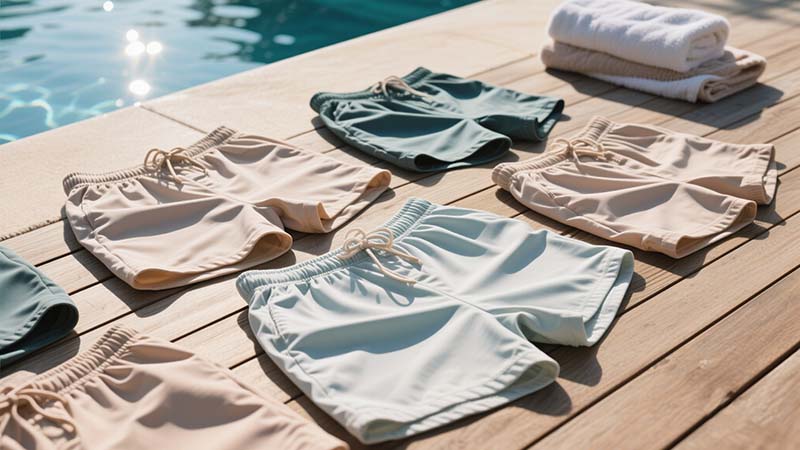
I used to think all swim shorts were pretty much the same—until I wore a pair that dried in minutes and felt like a second skin. That’s when I realized: fabric and features matter a lot.
High-quality swim shorts use premium, quick-drying fabrics and smart features that enhance comfort, durability, and performance.
Look for materials like recycled polyester or nylon with stretch, known for being lightweight, soft, and water-friendly. Additions like secure zip pockets, soft mesh lining (or none at all), reinforced stitching, and rust-proof hardware make a big difference in how they feel and hold up over time.
Let’s unpack what separates great from forgettable.
What fabrics make the best swim shorts?
Choosing the right fabric is the first step to building swim shorts your customer won’t want to take off.
Go for lightweight, quick-drying materials that feel smooth and last long.
Recycled polyester is my go-to—it’s soft, eco-friendly, and dries fast. Nylon blends are another solid option. Avoid anything heavy like cotton. A little stretch (like 5–10% spandex) also helps with movement and comfort, especially in the water.
Popular Swim Short Fabrics Compared
| Fabric | Key Benefits | Watch-outs |
|---|---|---|
| Recycled Polyester | Sustainable, smooth texture, fast drying | Slightly pricier |
| Nylon/Poly Blends | Durable, lightweight, good drape | Can feel stiff if not blended well |
| Poly-Spandex Mix | Stretchy, comfortable, holds shape | Too much spandex may sag when wet |
| Cotton (skip it) | Feels nice dry… but awful wet | Heavy, slow-drying, not durable |
I like to think of fabric as the first impression—if it feels cheap or gets soggy fast, no one’s wearing them twice.
Which features actually matter?
Once the fabric’s dialed in, it’s the features that take your shorts from good to great.
Look for functional touches that improve comfort and usability.
Think: secure pockets that drain water, comfortable liners (or no liner), flat seams to avoid chafing, and strong drawcords that stay tied. These aren’t fancy extras—they’re what makes a pair feel just right in everyday use.
My Favorite High-Impact Features
| Feature | Why It Matters |
|---|---|
| Quick-Dry Fabric | No one likes soggy shorts after the pool |
| Mesh or Stretch Liner | Adds comfort and support, if done right |
| Zippered Pocket | Secure place for keys, cards, or cash |
| Drainage Holes | Prevent pockets from ballooning underwater |
| Rust-Proof Hardware | No discoloration or breakdown over time |
| Flatlock Stitching | Reduces skin irritation |
| Adjustable Waistband | Ensures perfect fit for different body types |
When I’m designing, I run each feature through a simple test: Would I notice if it were missing? If the answer’s yes, it stays.
What about linings—yes or no?
This one’s personal. Some people swear by mesh liners. Others cut them out immediately.
Offer options if you can, or use a soft, breathable liner that doesn’t cling.
If your brand leans more athletic, no liner or stretch brief liners work well. For casual beachwear, soft mesh still has its fans. Just make sure it’s not the scratchy kind we all hated as kids.
Pro tip: test in real life
I’ve done everything from swimming laps to jogging to grabbing tacos in my sample shorts. If something rubs, sags, or soaks through, I know it needs work. It’s not about how it looks in a showroom—it’s how it feels on the move.
Key Fabric & Feature Testing Checklist:
- ✅ Dries within 20–30 minutes
- ✅ Doesn’t chafe after long wear
- ✅ Secure waistband stays in place
- ✅ Pockets don’t drag underwater
- ✅ No fading after multiple washes
The best feedback I ever got?
“These are the first shorts I’ve worn that I didn’t want to take off after the beach.” That’s the goal.
Conclusion
When it comes to swim shorts, the right fabric and thoughtful features make all the difference between “just okay” and “can I get another pair?”
How Do You Find the Right Manufacturer to Bring Your Vision to Life?

Finding the right manufacturer felt like dating. A few were promising at first, but only one truly got me—and my brand. That changed everything.
The right manufacturer is more than just a supplier—they’re a partner in your vision.
Look for a factory that specializes in your product type, communicates clearly, and aligns with your quality standards and values. Check for experience, reliability, sample quality, minimum order quantities, and transparency. Take your time, ask the right questions, and trust your gut—it’s worth it to find someone who truly understands what you’re trying to build.
Let me walk you through how I approached it.
Where should you start your search?
Honestly, it’s easy to get overwhelmed. I started by Googling and ended up with 27 tabs open and a headache.
Start with clear criteria and stick to them.
Use sourcing platforms like Alibaba, Maker’s Row, or industry-specific networks. Attend trade shows or ask other founders for referrals. Look specifically for swimwear or board shorts manufacturers—it makes a big difference when they already understand your product inside out.
My go-to search channels:
| Channel | Why It Works |
|---|---|
| Alibaba / Global Sources | Tons of options, great for price comparison |
| Industry Forums / Reddit | Real founder experiences, honest feedback |
| Trade shows (e.g., Magic) | Face-to-face meetings build trust fast |
| Referrals | Trusted introductions save time and stress |
The trick is to narrow fast. If a factory doesn’t specialize in swimwear? I move on.
What should you ask before working with a factory?
Once I had a shortlist, I sent out intro emails—but I didn’t just ask for a quote.
I asked questions that helped me understand how they work and what they care about.
Things like:
- Have you made board shorts before? Can I see samples?
- What’s your typical MOQ (minimum order quantity)?
- How do you handle quality control?
- Can you customize packaging and labels?
- How long is your lead time for samples and bulk orders?
And then I asked the one thing no one told me to ask: What kind of clients do you like working with?
That one reveals a lot. If they only want massive brands, I’m probably not a fit.
Sample Factory Interview Checklist:
| Question | Why It Matters |
|---|---|
| Do you specialize in swimwear? | Ensures they understand the materials & fit |
| Can I visit your factory (or video call)? | Transparency, trust, and professionalism |
| What’s your sample turnaround? | You want someone responsive and consistent |
| Can I speak to a current client? | Verifies credibility |
| What are your payment terms? | Cash flow is real—know what you’re agreeing to |
If they dodge or delay simple questions? That’s a red flag for me.
How do you evaluate samples?
This was a big lesson for me: always pay for a sample. And then wear it, wash it, stretch it, live in it.
Samples tell you everything you need to know—about quality, communication, and reliability.
I once worked with a factory that sent gorgeous photos, but the actual sample? Stitching was uneven, and the drawstring came off in a day. That was a hard no.
What I look for in samples:
- Clean, even stitching
- Soft, fast-drying fabric
- Functional pockets and waistband
- Correct fit based on my tech pack
- Packaging that protects the product
It doesn’t have to be perfect (you’ll revise), but it should show effort. Sloppy samples mean sloppy production.
Real talk: communication is everything
Even if the sample is great, if a factory ghosts me for days or sends unclear replies, I walk. Fast.
You need someone who responds quickly, listens closely, and treats your business seriously—even if you’re just starting out.
That’s what I found with AIRS. We don’t just make shorts—we collaborate, tweak, test, and improve together.
What’s the long-term goal with a manufacturer?
You’re not just looking for someone to sew your shorts—you’re looking for a teammate.
A great manufacturer helps you scale, solve problems, and improve your product line over time.
I’ve built real friendships with some of the folks I work with. They’ve taught me things I didn’t know, flagged issues I missed, and celebrated wins with me. That kind of partnership? You can’t put a price on it.
What your manufacturer should grow into:
- A partner who gives honest feedback
- Someone who scales with your orders
- A team that values your business and your brand
- A collaborator who helps bring new ideas to life
Conclusion
Finding the right manufacturer isn’t fast—but when you do, your entire brand gets stronger, smarter, and more fun to build.
What’s the Smartest Way to Price, Package, and Launch Your Swim Shorts Line?
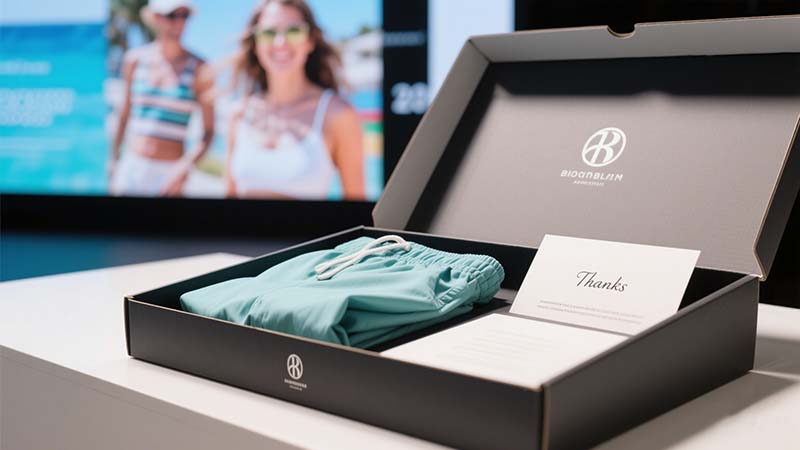
Pricing my first swim shorts felt like throwing darts in the dark—until I realized it’s not just about cost, but perception. Same with packaging and the launch. It’s all part of the story you’re telling.
The smartest way to price, package, and launch your swim shorts line is to build around value, brand story, and clarity.
Price based on perceived value, not just production costs. Package in a way that reinforces your identity and delights your customer. Launch with a focused message, strong visuals, and a plan that creates anticipation and trust. These three areas work together—they’re how you introduce your brand to the world, and they deserve your full attention.
Let’s break it down like I wish someone had done for me.
How should you price your swim shorts?
Pricing isn’t just math—it’s emotion. It tells your customer what kind of brand you are.
Smart pricing balances cost, margin, and perceived value.
Start with your full production cost (fabric, trims, labor, packaging, etc.) and multiply by 2–3x for wholesale, or 4–6x for direct-to-consumer. But here’s the catch: if your branding looks premium, your pricing has to match it. And if you price too low, you’ll attract the wrong customer—and hurt your margins.
Swim Shorts Pricing Example
| Item | Cost (USD) |
|---|---|
| Fabric & Materials | $6 |
| Labor | $4 |
| Trims & Labels | $2 |
| Packaging | $1.5 |
| Shipping (per unit) | $2 |
| Total Cost (Landed) | $15.5 |
| Wholesale Price (x2.5) | $38.75 |
| Retail Price (x5) | $77.50 |
Always know what market you’re playing in. If your competitor sells $70 shorts, yours better feel as good or better—or be priced differently for a reason.
What kind of packaging makes sense?
Here’s what I realized: packaging is your first physical impression. And it doesn't have to be expensive to feel special.
Great packaging is consistent with your brand and enhances the unboxing experience.
If you’re an eco-conscious brand, skip plastic and go for kraft paper or recycled poly mailers. If you’re more high-end, think custom tissue wrap, magnetic boxes, maybe even a thank-you card with a handwritten note. It all adds up.
Packaging Touches I Love:
- Custom stickers or stamps for a personal vibe
- Reusable pouches that double as travel bags
- Scented tissue paper (yes—it’s a thing!)
- Branded care cards or origin stories inside the package
Think of packaging as marketing. If someone posts an unboxing video, what will it say about your brand?
What’s the best way to launch?
This is the fun part—but it’s also where many new brands fumble. I did too at first.
A smart launch builds anticipation, trust, and desire.
You want people to feel like they’re part of something—not just buying another pair of shorts. Start warming up your audience weeks before. Share sneak peeks, behind-the-scenes clips, even polls on color options. Then, when launch day comes, it’s not just you talking about your brand—they’re invested too.
My Launch Checklist:
| Phase | What to Do |
|---|---|
| Pre-launch | Build an email list, create hype on social, run a countdown |
| Launch Week | Offer limited-time pricing, share reviews/testimonials, go live on IG or TikTok |
| Post-launch | Follow up with thank-you emails, collect feedback, create user-generated content |
Here’s something that worked wonders for me: I hand-packed the first 50 orders with a note and a personal thank-you. That tiny gesture turned buyers into brand ambassadors. Never underestimate the power of human connection.
Bonus tip: pricing + packaging = story
Don’t treat these like separate steps. They’re all part of the experience. If your price says “premium” but your packaging says “budget,” people get confused. Make it feel cohesive and intentional.
Conclusion
When you price with confidence, package with care, and launch with purpose, you don’t just sell swim shorts—you build a brand people remember.
How Can You Market and Scale a Swim Shorts Brand That Actually Sells?
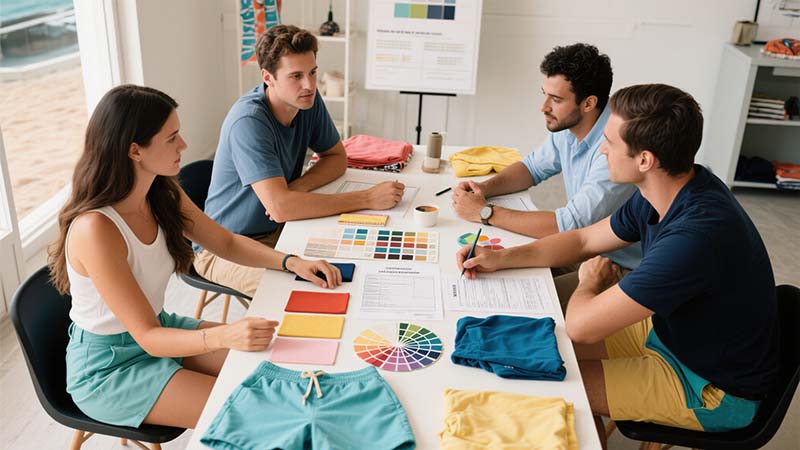
Let’s be real—building a brand is one thing. But building a brand that actually sells? That’s the game. And for me, it didn’t happen with luck. It happened when I stopped guessing and started getting strategic.
To market and scale a swim shorts brand that sells, you need three things: a clear brand identity, a focused marketing strategy, and a product that solves a real need.
Start by defining who you’re for and why they should care. Use content, social proof, and storytelling to build trust. Then double down on what’s working—whether it’s email, paid ads, or partnerships—and slowly scale up while protecting your margins. Growth doesn’t come from going viral once. It comes from consistency.
Let’s talk about how I did it (and what I’d do differently).
What makes a swim shorts brand stand out?
You can’t out-shout the big brands, but you can out-story them.
The swim shorts brands that win are the ones with a clear vibe, voice, and point of view.
Are you laid-back and coastal? Streetwear-inspired? Performance-driven for surfers? Own that. People don’t just buy a product—they buy into a lifestyle. And your branding should make that lifestyle feel real, accessible, and aspirational.
Quick Brand Clarity Checklist
| Element | Example |
|---|---|
| Brand Vibe | Chill, minimalist, ocean-inspired |
| Target Audience | 25–35 y/o men who love travel & surf |
| Product Edge | Better fit + quick-dry fabric + subtle style |
| Tone of Voice | Casual, friendly, slightly cheeky |
| Visual Identity | Neutral tones, film-style photography |
People need to recognize you before they even see your logo.
What marketing channels actually work?
There are a million ways to market—and a million ways to waste your time. I learned that the hard way.
Focus on a few channels that fit your strengths, your product, and your audience.
If your ideal customer scrolls Instagram every morning, you better be showing up there. If they trust email more than ads, build your list and write emails that feel human. The goal is to build trust before you pitch.
What’s worked best for me:
- Instagram Reels & TikToks showing BTS, try-ons, packing orders
- Email sequences with storytelling, offers, and launch updates
- Influencer partnerships with micro-creators in travel/surf spaces
- UGC (User-Generated Content) reposted with permission
- Product giveaways to grow my email list and hype new drops
And remember—you are your best influencer. Get in front of the camera. Tell your story. People love buying from real humans.
How do you scale without burning out?
Here’s the truth: scaling looks sexy online, but in real life, it’s about systems and support.
You scale by building repeatable processes, outsourcing smartly, and knowing your numbers.
If something works—an ad, a creator, a product color—double down. If something doesn’t, cut it fast. You don’t need to be everywhere. You just need to own the few places you are.
My Scaling Starter Pack
| System | Tool I Use |
|---|---|
| Inventory Management | Airtable + Google Sheets |
| Email Marketing | Klaviyo |
| Paid Ads | Meta Ads Manager |
| Customer Service | HelpScout + saved replies |
| Order Fulfillment | 3PL (once orders hit 100+/month) |
I also set aside time each month to review what’s working. What sold best? What content got shared? What emails were opened? Scaling isn’t about doing more. It’s about doing more of what works.
Pro tip: invest in your repeat customers
It’s 5x cheaper to sell to a repeat buyer than a new one. I send personal thank-you emails to first-time buyers. I offer early access to new drops. That personal touch keeps people coming back.
How do you create momentum that lasts?
This one’s big. Anyone can hype up a launch. But can you stay relevant 6 months later?
Consistency beats hype.
Keep showing up. Keep refining. Keep making shorts that people love. Focus on building a community around your brand. Ask for feedback. Share customer photos. Post behind-the-scenes updates. Treat your audience like insiders—not just buyers.
Long-Term Brand Growth Tactics:
- Build a founders list—people who support your early and spread the word
- Use seasonal launches to create anticipation
- Collaborate with creators or small brands for capsule drops
- Launch limited-edition colors or prints
- Survey your audience before restocking to gauge demand
At the end of the day, people don’t just want another pair of shorts. They want to belong to something. That’s what a real brand gives them.
Conclusion
If you build with heart, market with clarity, and scale with intention, your swim shorts brand won’t just sell—it’ll stick.
Wrap-Up: My Final Words as a Swim Shorts Manufacturing Veteran
I've worked with over 300 swimwear startups and brands across 5 continents. The ones that make it?
✅ Start lean but think long-term
✅ Obsess over fabric and fit
✅ Build a brand, not just a product
✅ Treat suppliers like partners
✅ Market hard and test faster than the competition
If you want your swim shorts to stand out—solve a problem, tell a story, and deliver a premium experience from unboxing to beach day.
.png)




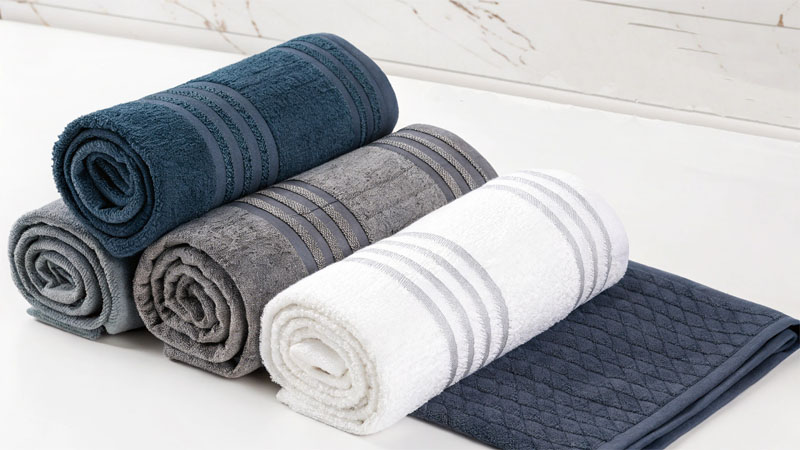
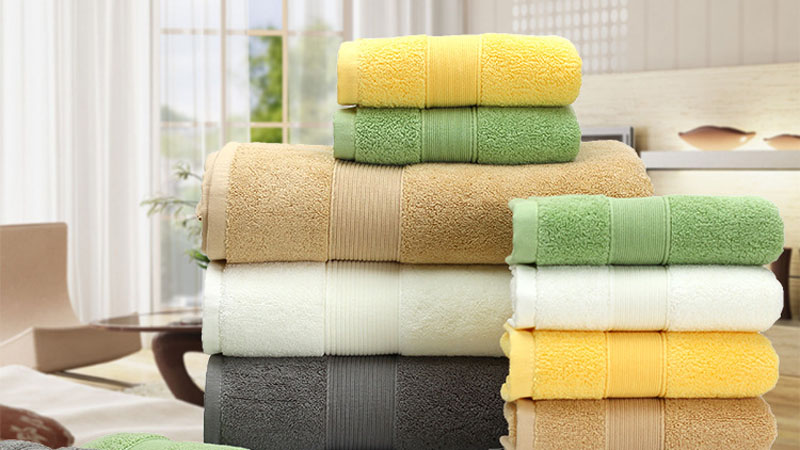
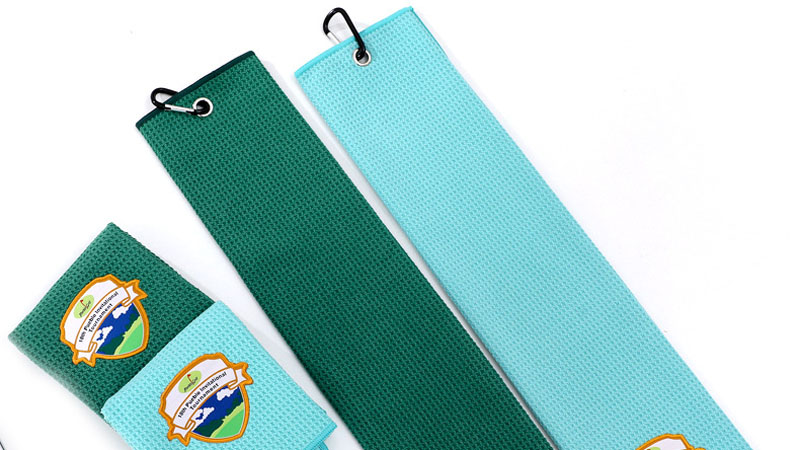
-1024x337.png)